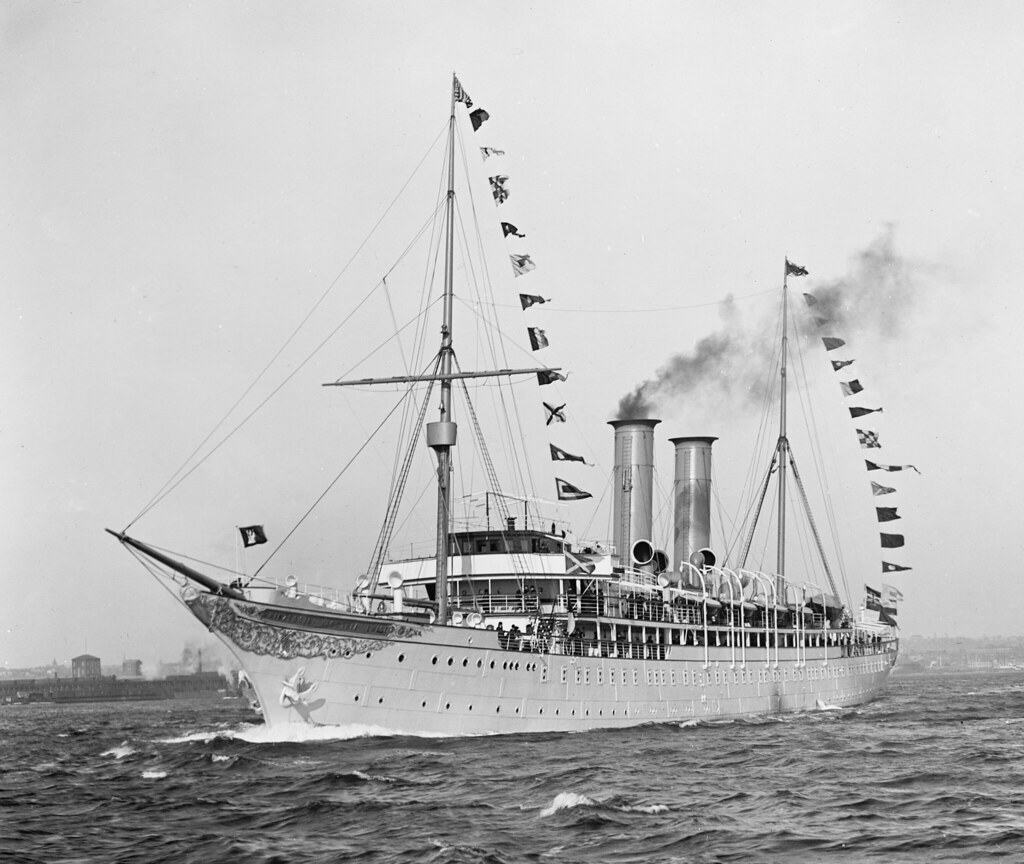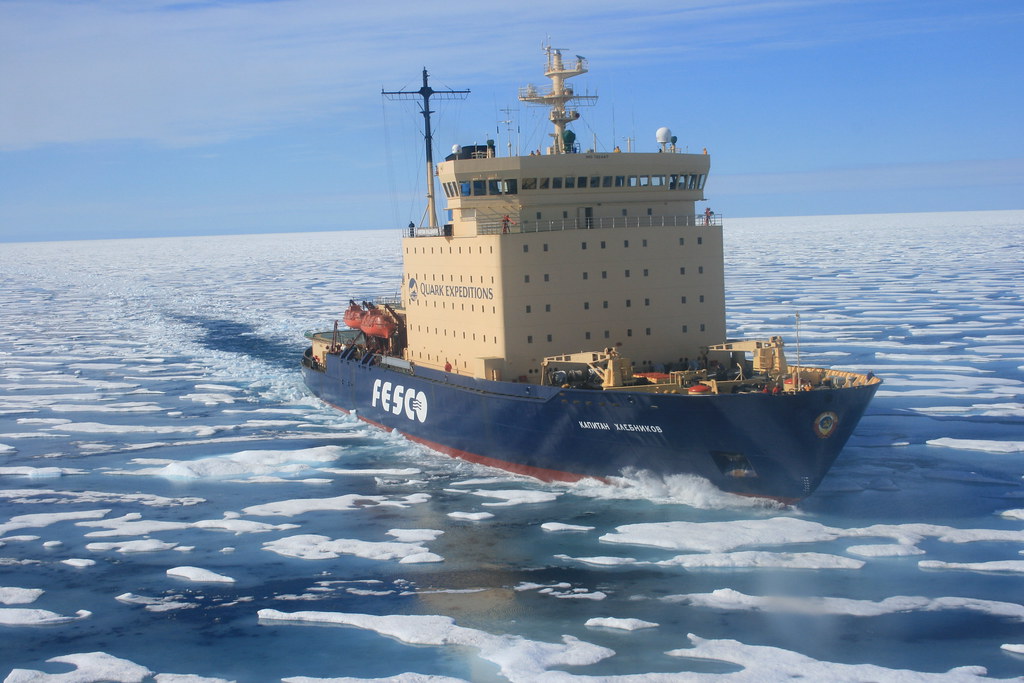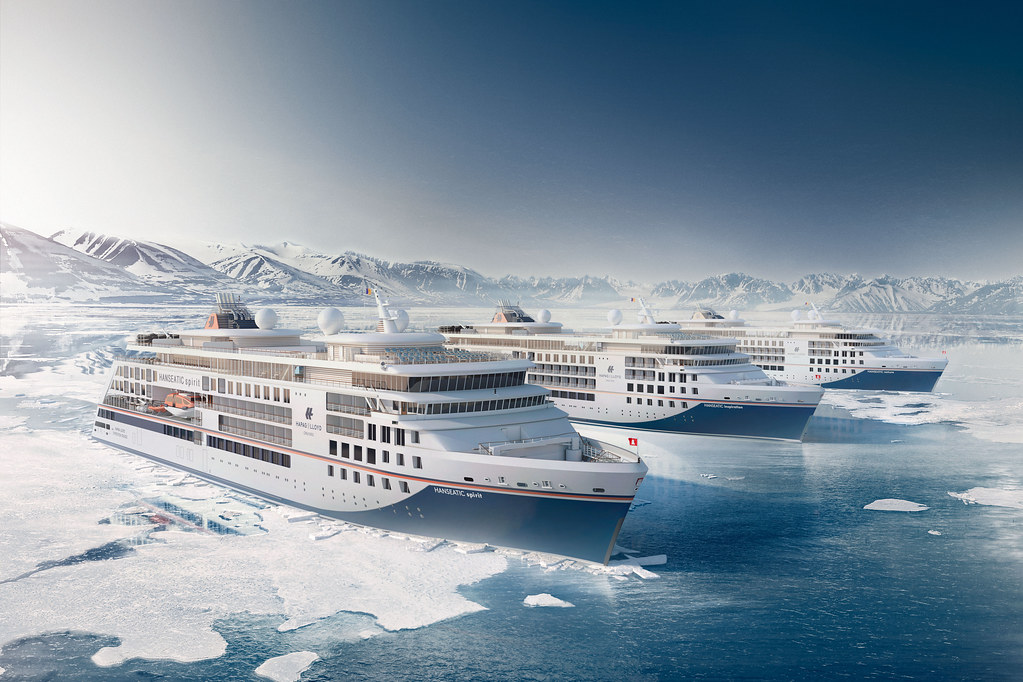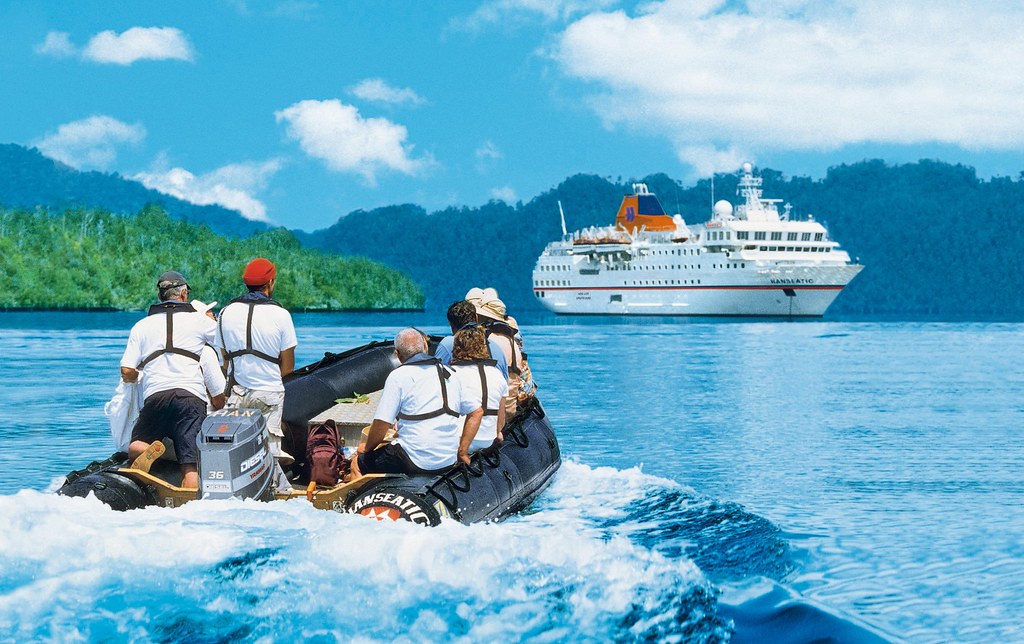It seems every time I attend a cruise line’s launch presentation, I hear “we pioneered luxury expedition cruising”. And while we may have seen various ‘eras’ of expedition cruising, this type of sea travel is not as new as we might think.
So who can rightfully make this claim? Let’s have a quick history lesson.
We often benchmark the ‘modern era’ of expedition cruising with Lars-Eric Lindblad’s 1966 chartering of an Argentinean naval supply vessel to take guests to Antarctica. Truth is, these type of super adventurous cruises began over 100 years ago.
The first purpose-built premium cruise ship of any sort was the brainchild of the German Hapag line (now Hapag-Lloyd) chairman, Albert Ballin. Launched in 1900 as an ultra-luxurious 124m, 120-cabin ‘yacht’ christened Prinzessin Victoria Luise. The Kaiser was furious to learn her appointments were so lavish, they exceeded those of the imperial yacht, Hohenzollern II. She sailed on dedicated pleasure cruises in the Mediterranean, Black Sea and the Caribbean until 1906 when she was lost in an accident in Jamaica.
‘Pleasure voyages’ were again offered by another German cruise line in 1928 to the Arctic and Terra del Fuego aboard a repurposed luxury passenger liner of Hamburg Sud, the 152m Monte Cervantes. The near-new vessel was lost near Ushuaia in 1930 after striking a submerged rock.
Now in the 21st Century, history is repeating itself with a concerted return to luxurious expedition voyages, evidenced by the frenzy of modern vessels under construction and planning to meet this pent-up demand.
The expedition cruise industry grew rapidly in the ‘90s with the sudden liberation of the former Soviet oceanographic fleet, releasing numerous ice-strengthened vessels and icebreakers into the world’s leisure market. Companies like Quark, Aurora, Peregrine and Zegrahm were quick to recognise the opportunity and immediately put ships like Akademik Ioffe, Kapitan Khlebnikov, Shokalskiy and their many siblings to work on polar voyages.
These rugged, expertly crewed and fit-for-purpose ships were an instant hit with adventurous travellers wanting to visit destinations like the Antarctic Peninsula, Svalbard and the Russian Far East in relative comfort and safety. But these voyages were marketed as niche ‘expeditions’, not cruises, and attracted worldly and inquisitive travellers who had no intention of ever ‘cruising’ in the traditional sense.
So now the pendulum has swung and adventurous travellers are demanding - and getting - luxury with their expeditions once again. Why is this?
Hard-nosed purists will argue that it is the ruthless profit-driven commoditisation of natural heritage, the commercialisation of the world’s scenic and environmental wonders that in the process reduces these marvels to mere theme park status. These diehards will also argue that the increased number of tourists run the risk of placing unmanageable pressure on already fragile ecosystems.
The counter-argument is that by exposing more people to the precarious circumstance of our planet, more advocates for its preservation will be generated. There is some evidence that this theory is working and, coupled with mass media documentaries like those from the BBC and Sir David Attenborough, our collective awareness is rising.
New ships on order
Much ado has been made about the ships under construction. Scenic, Crystal, Hurtigruten, Lindblad, Aurora and Hapag-Lloyd are just some and their array of hi-tech wizardry and stellar luxury levels are shamelessly boasted about by their respective operators. New marketing buzz-phrases are even being invented in an attempt to set these new era vessels apart from their peers. Scenic Eclipse is apparently the “world’s first discovery yacht”, a term that might draw some loud scoffing from the likes of Hapag-Lloyd.
Entering this fray are announcements from longtime Dutch operator, Oceanwide, chic French-flagged Ponant, romantic riggers Star Clippers, swish Silversea, stalwart Lindblad, lux-meisters Hapag-Lloyd and even locals North Star and Coral Expeditions.
These newbuilds range from the utilitarian to the utmost in leading-edge design and technology. Noteworthy in this regard is Hurtigruten’s next two ships, the Rolls-Royce designed Roald Amundsen and Fridtjof Nansen which will incorporate hybrid power in the propulsion systems. While the contribution of alternative power will be minimal in the overall scheme, the master has the option of silent, emission-free running in circumstances that can benefit from the total exclusion of noise and smoke.
The verdict
If judgement must be made as to the rightful owner of the title ‘pioneer of luxury expedition cruising’, then it must fall to the German line, Hapag-Lloyd. Their ship, HANSEATIC (IMO 9000168) which recently passed to Canadian operator, One Ocean, was for several years the only expedition vessel to achieve a 5-star rating from Berlitz. The 184-passenger ship, rated to the highest ice classification (1A Super), began operations as a true luxury expedition vessel in 1992, first with Hanseatic Tours, then from 1997, with Hapag-Lloyd.
Hapag-Lloyd has also operated the smaller BREMEN in a similar capacity since 1993.
So who can rightfully make this claim? Let’s have a quick history lesson.
We often benchmark the ‘modern era’ of expedition cruising with Lars-Eric Lindblad’s 1966 chartering of an Argentinean naval supply vessel to take guests to Antarctica. Truth is, these type of super adventurous cruises began over 100 years ago.
The first purpose-built premium cruise ship of any sort was the brainchild of the German Hapag line (now Hapag-Lloyd) chairman, Albert Ballin. Launched in 1900 as an ultra-luxurious 124m, 120-cabin ‘yacht’ christened Prinzessin Victoria Luise. The Kaiser was furious to learn her appointments were so lavish, they exceeded those of the imperial yacht, Hohenzollern II. She sailed on dedicated pleasure cruises in the Mediterranean, Black Sea and the Caribbean until 1906 when she was lost in an accident in Jamaica.
 |
| Launched in 1900, Prinzessin Victoria Luise was the first purpose-built cruise ship. |
‘Pleasure voyages’ were again offered by another German cruise line in 1928 to the Arctic and Terra del Fuego aboard a repurposed luxury passenger liner of Hamburg Sud, the 152m Monte Cervantes. The near-new vessel was lost near Ushuaia in 1930 after striking a submerged rock.
Now in the 21st Century, history is repeating itself with a concerted return to luxurious expedition voyages, evidenced by the frenzy of modern vessels under construction and planning to meet this pent-up demand.
The expedition cruise industry grew rapidly in the ‘90s with the sudden liberation of the former Soviet oceanographic fleet, releasing numerous ice-strengthened vessels and icebreakers into the world’s leisure market. Companies like Quark, Aurora, Peregrine and Zegrahm were quick to recognise the opportunity and immediately put ships like Akademik Ioffe, Kapitan Khlebnikov, Shokalskiy and their many siblings to work on polar voyages.
 |
| Former Soviet icebreaker, Kapitan Khlebnikov, began expedition cruises soon after the fall of the USSR |
These rugged, expertly crewed and fit-for-purpose ships were an instant hit with adventurous travellers wanting to visit destinations like the Antarctic Peninsula, Svalbard and the Russian Far East in relative comfort and safety. But these voyages were marketed as niche ‘expeditions’, not cruises, and attracted worldly and inquisitive travellers who had no intention of ever ‘cruising’ in the traditional sense.
So now the pendulum has swung and adventurous travellers are demanding - and getting - luxury with their expeditions once again. Why is this?
Hard-nosed purists will argue that it is the ruthless profit-driven commoditisation of natural heritage, the commercialisation of the world’s scenic and environmental wonders that in the process reduces these marvels to mere theme park status. These diehards will also argue that the increased number of tourists run the risk of placing unmanageable pressure on already fragile ecosystems.
The counter-argument is that by exposing more people to the precarious circumstance of our planet, more advocates for its preservation will be generated. There is some evidence that this theory is working and, coupled with mass media documentaries like those from the BBC and Sir David Attenborough, our collective awareness is rising.
New ships on order
 |
| Hapag-Lloyd will have three new 'Hanseatic' ships launched by 2021 |
Much ado has been made about the ships under construction. Scenic, Crystal, Hurtigruten, Lindblad, Aurora and Hapag-Lloyd are just some and their array of hi-tech wizardry and stellar luxury levels are shamelessly boasted about by their respective operators. New marketing buzz-phrases are even being invented in an attempt to set these new era vessels apart from their peers. Scenic Eclipse is apparently the “world’s first discovery yacht”, a term that might draw some loud scoffing from the likes of Hapag-Lloyd.
Entering this fray are announcements from longtime Dutch operator, Oceanwide, chic French-flagged Ponant, romantic riggers Star Clippers, swish Silversea, stalwart Lindblad, lux-meisters Hapag-Lloyd and even locals North Star and Coral Expeditions.
These newbuilds range from the utilitarian to the utmost in leading-edge design and technology. Noteworthy in this regard is Hurtigruten’s next two ships, the Rolls-Royce designed Roald Amundsen and Fridtjof Nansen which will incorporate hybrid power in the propulsion systems. While the contribution of alternative power will be minimal in the overall scheme, the master has the option of silent, emission-free running in circumstances that can benefit from the total exclusion of noise and smoke.
The verdict
 |
| Hapag-Lloyd HANSEATIC on a tropical expedition (H-L Cruises) |
If judgement must be made as to the rightful owner of the title ‘pioneer of luxury expedition cruising’, then it must fall to the German line, Hapag-Lloyd. Their ship, HANSEATIC (IMO 9000168) which recently passed to Canadian operator, One Ocean, was for several years the only expedition vessel to achieve a 5-star rating from Berlitz. The 184-passenger ship, rated to the highest ice classification (1A Super), began operations as a true luxury expedition vessel in 1992, first with Hanseatic Tours, then from 1997, with Hapag-Lloyd.
Hapag-Lloyd has also operated the smaller BREMEN in a similar capacity since 1993.

No comments:
Post a Comment